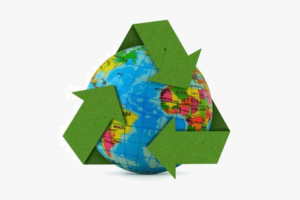
If the climate emergency is the result of how our society has progressed, we need to review the next steps, develop new alternatives and draw up new plans. The ESG EO comes from the English “Environmental”, which means environment, and talks about actions to mitigate environmental impacts. But do you know what ESG’s “Environmental” includes?
First let’s go back to base. ESG is the acronym for Environmental (environment), Social (social) and Governance (governance), which are indicators used in the financial market to help investors understand which companies are aligned with global sustainability goals, such as the SDGs ( Sustainable Development Goals).
To understand what ESG is all about, check out our article What is ESG and how does it apply in practice. But if you already know the basics, now let’s dive deeper into Environmental.
WHAT IS INCLUDED IN THE ESG ENVIRONMENTAL
“Environmental” is the translation of “environmental”, therefore, everything that is related to nature: water, air quality, waste, deforestation, among others.
A company that wants to implement sustainable guidelines in its strategy needs to think about the impact that its operations and products generate on the environment, understanding the weaknesses that need to be developed and the strengths that will be maintained.
Some of the actions that make up the ESG Environmental are:
- Study of environmental impacts (EIA), from the installation of the enterprise, production, final product, packaging and logistics.
- Solid waste management:
- Use of renewable raw material source
- Reduction in the volume of solid and liquid waste generation.
- Correct treatment of its tributaries.
- Recycling.
- Composting.
- Reverse logistic.
- Capture and reuse of water.
- Energy consumption:
- Renewable energy matrices such as solar or biogas .
- Architecture that benefits the entry of light and natural air.
- Conscious use of energy.
- Reducing carbon dioxide emissions:
- Improving energy matrices.
- Optimizing logistics.
- Compensating CO2 as, for example, in the purchase of carbon credits .
- Products and packaging with more ecological and durable materials.
- Investment in green technology and strategies.
- Integration and education of interest groups are examples.
Remembering that here we are talking about environmental aspects separately, but that they are integrated with the other ESG letters: Social and Governance. The company’s strategies will always have to compose these three aspects.
HOW TO IMPLEMENT ENVIRONMENTAL IN YOUR COMPANY’S ESG
Even if you have a small business or a developing start-up, you can apply ESG in the company. This is actually a positive point, because it allows the business to grow with more solid foundations and a culture that is looking towards sustainable innovation.
There is no definitive indicator for the implementation of ESG, there are some strategies that companies can adopt, adapting them according to the needs and possibilities of the company.
Let ‘s start with Materiality, which is used in the general ESG strategy, where the organization carries out an internal process or with a partner, in order to understand what its impacts are, where to correctly apply its resources and define actions.
For the materiality and the entire development process of ESG strategies, it is important to understand that the data and solutions do not come from guesswork, but rather from a complete study that integrates all stakeholders: managers, employees and society, that is, the stakeholders.
By understanding what the business impacts are, you can start working on the necessary strategies. Solutions can be given by:
- with its own personnel and internal technology, for example, encouraging recycling within the company;
- in hiring the provision of external services, such as a company that performs the selective collection and correct disposal of waste;
- a joint solution between the company’s team and service providers.
After materiality, you can also develop environmental compliance, which will determine the rules and practices for all parts of the company to follow in favor of achieving sustainable goals.
The sustainability report is the final product of these actions and is what will show investors and other interested parties what the company’s positive actions are. But be careful, the report must be transparent and sincere, for example, in addition to containing positive achievements, it is important to say what are the weak points that still need to be worked on.
Transparency even talks about Governance and is a way to prevent the company from committing greenwashing, for example.
A great reference material to understand more about the sustainability indicators is through the GRI (Global Reporting Initiative), an independent organization that helps companies understand and disclose their impacts by facilitating language and setting sustainable standards.
With these elements, you can start to develop the goals that contemplate the Environmental of the ESG in your business.



